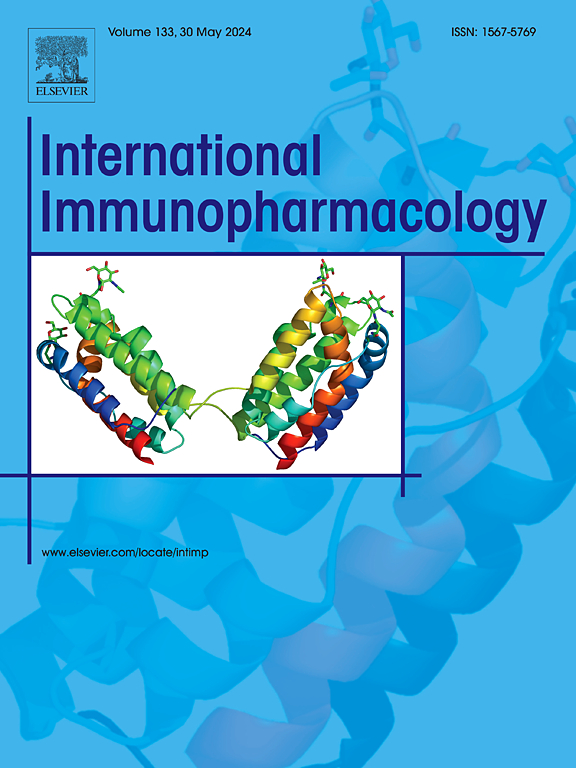NUDT1 aggravates intestinal epithelial barrier injury through oxidative stress in ulcerative colitis
IF 4.8
2区 医学
Q2 IMMUNOLOGY
引用次数: 0
Abstract
Background
Nudix hydrolase 1 (NUDT1) plays a crucial role in tumours, where it helps limit cellular damage caused by reactive oxygen species. However, the exact function of NUDT1 in ulcerative colitis (UC) is not well understood.
Methods
NUDT1 expression in the intestinal mucosal tissues of patients with UC was analysed using quantitative reverse transcription polymerase chain reaction. A public database was used to analyse the expression of selected signature genes of interest in patients with UC with different NUDT1 expression levels. TH588, a potent NUDT1 inhibitor, was used to treat intestinal epithelial cells (IECs) in mice. The functions of the IECs were assessed using quantitative reverse transcription polymerase chain reaction, flow cytometry, western blotting, and fluorescence microscopy. A mouse model of dextran sodium sulphate-induced colitis was established.
Results
We examined NUDT1 expression and found that it was significantly elevated in the colon tissues of patients with UC. A colitis model was established in wild-type mice treated with TH588, which significantly reduced intestinal mucosal inflammation and induced notable alterations in faecal microbiota composition. Moreover, TH588 helped preserve intestinal mucosal barrier function. Inhibition of NUDT1 expression in IECs enhanced antioxidant activity by increasing Nrf2 expression and reducing ERK phosphorylation, which, in turn, stabilised tight junctions in IECs exposed to oxidative stress.
Conclusions
Our research emphasises the role of NUDT1 in modulating the intestinal microbiota and intestinal mucosal barrier in UC, indicating that targeting NUDT1 during intestinal mucosal inflammation could serve as a promising therapeutic strategy for UC.

求助全文
约1分钟内获得全文
求助全文
来源期刊
CiteScore
8.40
自引率
3.60%
发文量
935
审稿时长
53 days
期刊介绍:
International Immunopharmacology is the primary vehicle for the publication of original research papers pertinent to the overlapping areas of immunology, pharmacology, cytokine biology, immunotherapy, immunopathology and immunotoxicology. Review articles that encompass these subjects are also welcome.
The subject material appropriate for submission includes:
• Clinical studies employing immunotherapy of any type including the use of: bacterial and chemical agents; thymic hormones, interferon, lymphokines, etc., in transplantation and diseases such as cancer, immunodeficiency, chronic infection and allergic, inflammatory or autoimmune disorders.
• Studies on the mechanisms of action of these agents for specific parameters of immune competence as well as the overall clinical state.
• Pre-clinical animal studies and in vitro studies on mechanisms of action with immunopotentiators, immunomodulators, immunoadjuvants and other pharmacological agents active on cells participating in immune or allergic responses.
• Pharmacological compounds, microbial products and toxicological agents that affect the lymphoid system, and their mechanisms of action.
• Agents that activate genes or modify transcription and translation within the immune response.
• Substances activated, generated, or released through immunologic or related pathways that are pharmacologically active.
• Production, function and regulation of cytokines and their receptors.
• Classical pharmacological studies on the effects of chemokines and bioactive factors released during immunological reactions.

 求助内容:
求助内容: 应助结果提醒方式:
应助结果提醒方式:


